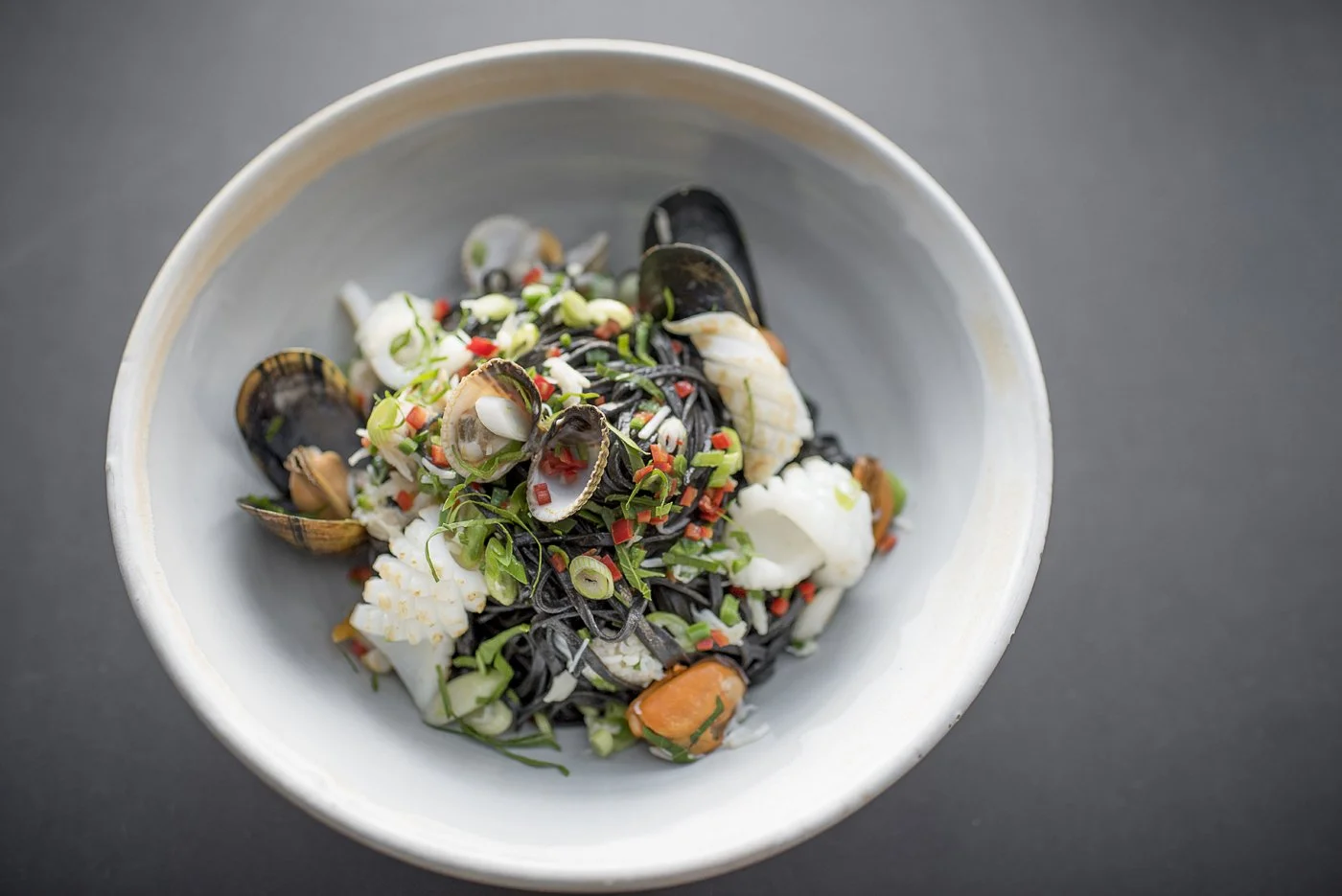Komodo Kitchen: Sustainable Seafood
We are renowned at Komodo for being seafood afficionados. Not only do we celebrate the artistry of cooking with seafood having tried and tested an impressive collection of recipes, we know the worth in educating people about what they’re putting in their mouths and the associated impact on our oceans. We take the time to talk through our menus with guests and explain where our ingredients are from, providing critical information on the challenges faced by overconsumption and common mistakes when sourcing seafood. Our dishes are valuable, not just for their taste but for the knowledge that comes with them. Every bite enlightening, not peppered with ‘Seaspiracy’ guilt.
There is much we can do together to rebuild the ocean’s biodiversity and abundance. Wild seafood is the healthiest and most environmentally-friendly source of protein on earth but it should be sourced properly and eaten mindfully to avoid overfishing and by-catch. Collectively, we can protect the supplies that will feed populations all over the globe. We just need to think more carefully before we plan our sushi evening or moules mariniere. According to the UN, about 90% of global fish stocks are either overfished or at risk of being overfished, which indicates that overall, we do need to reduce our fish consumption but there are ways to be more conscious about eating our favourite food without cutting it out altogether. Saving seafood for a once-a-week treat will go a long way in recovering its supply. Over the coming months, we will share our most luxurious recipes that will help shift perceptions and recategorise fish as a precious, not common, food source.
Every month we will offer another tip or two on how to reduce your impact on the oceans but for now, we leave you with Scottish chef Tom Kitchin’s recipe for squid ink spaghetti that will turn your supper into a lavish occasion. When shopping for your meal, it’s best to stay away from the big five overfished species (salmon, tuna, cod, prawns and haddock). Choosing fresh, unpacked, local fish from a fishmonger is a much more sustainable option. It’s also good fun and educational too. In the recipe below, we’ve swapped cod cheeks for scallops because not only are they sustainable, they actually improve water quality and rebuild coastal habitats meaning that farmed, hand-dived scallops are a healthy alternative on every front. Enjoy.
Tom Kitchin's seafood and squid ink spaghetti
INGREDIENTS
For the spaghetti
500g pasta flour
5 whole eggs
1 tbsp olive oil
1 tbsp vegetable oil
1 tsp table salt
16g squid ink
For the seafood
1 small bunch spring onions (finely sliced)
8 scallops (or white fish pieces such as hake)
180g fresh picked white crab meat
180g fresh squid tubes, cut into triangles and scored
250g mussels
250g cockles
1 lime cut into wedges
1 tsp shallots
50ml dry white wine
1 tsp vegetable oil
coriander leaves
For the chilli sauce
60ml white wine vinegar
50g sugar
15g garlic, chopped
15g red chilli, chopped
15g peanuts, crushed
10g coriander, chopped
10g salt
1 tsp olive oil
METHOD
To prepare the spaghetti
Mix together all the pasta ingredients in a kitchen mixer using the dough hook, or by hand to create a soft, smooth pasta dough. Rest the dough in the fridge for at least an hour, or preferably overnight. Roll out the dough using a pasta machine to the desired thickness. Apply the spaghetti attachment and roll out the spaghetti. Blanch the spaghetti in boiling salted water for 2½ minutes, then refresh quickly in ice water and strain through a colander once cold. The cooked pasta can be used at once or stored in the fridge for up to two days. To serve, heat the spaghetti briefly in boiling water.
To prepare the seafood
Heat a heavy-bottomed pan and add the teaspoon of vegetable oil. Cook the shallots for a few seconds, then add the mussels and cockles. Immediately pour in the wine, cover and leave to cook for about two minutes or until all the shells are open. Throw away any shells that do not open. Set aside to keep warm and strain. Pan fry the squid, and cod cheeks. Toss together the hot pasta with the crab meat, sliced spring onions, cod cheeks, mussels, cockles and squid just to heat everything through. Dress with the chilli sauce to taste (see below) and garnish with coriander leaves and lime wedges.
For the sweet chilli sauce
Heat a frying pan. Add oil and sauté the garlic and chilli for 2-3 minutes, until the oil of the chilli starts to come out. Now add the vinegar, sugar and a pinch of salt and reduce until the sauce thickens. Then add the chopped peanuts and coriander and serve.
Next month, we will be investigating the health and environmental benefits of a diet of small fish such as anchovies, sardines and herrings. Our recipe of smoked sardine bruschetta will leave your tastebuds sufficiently tantalised. See you soon.




